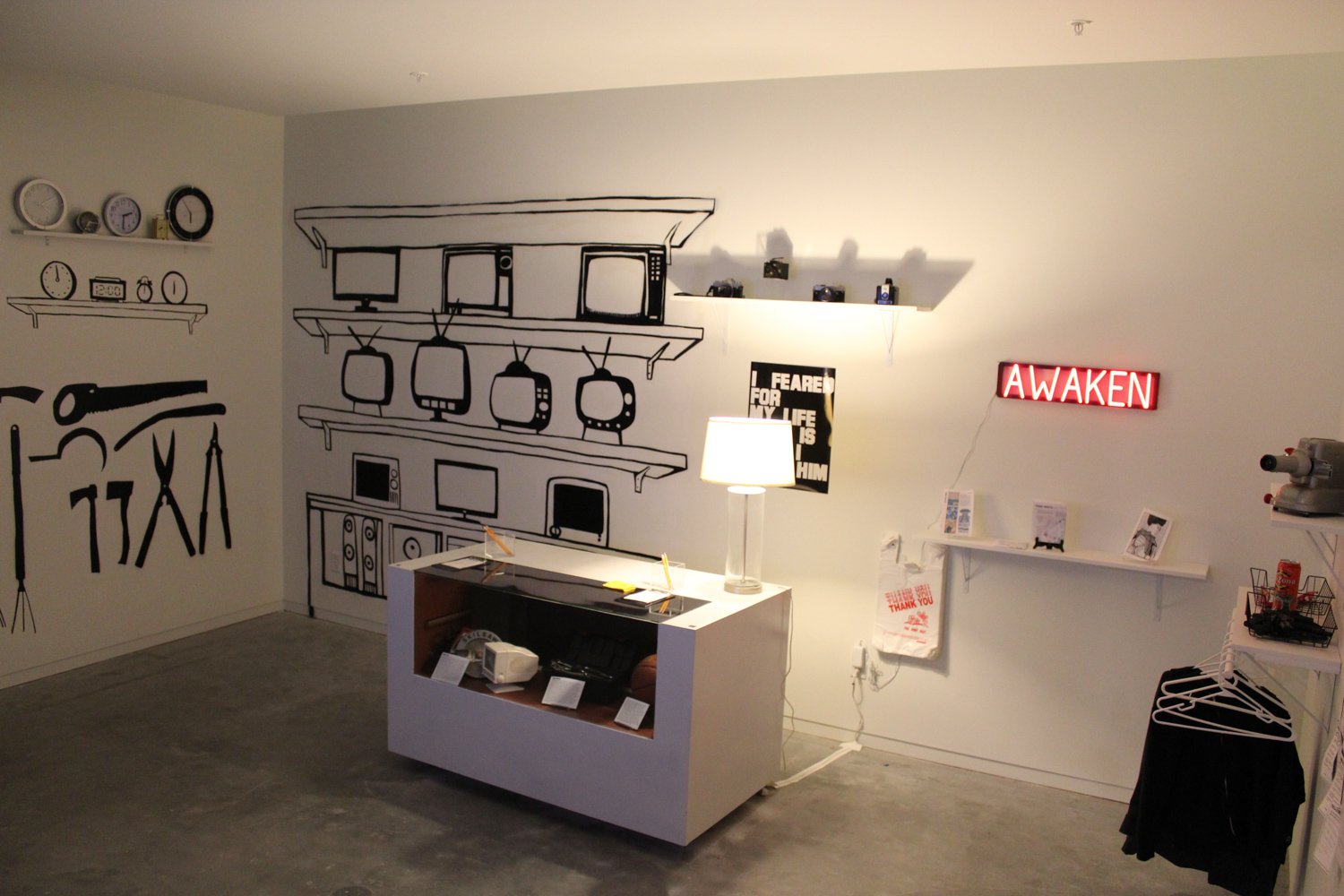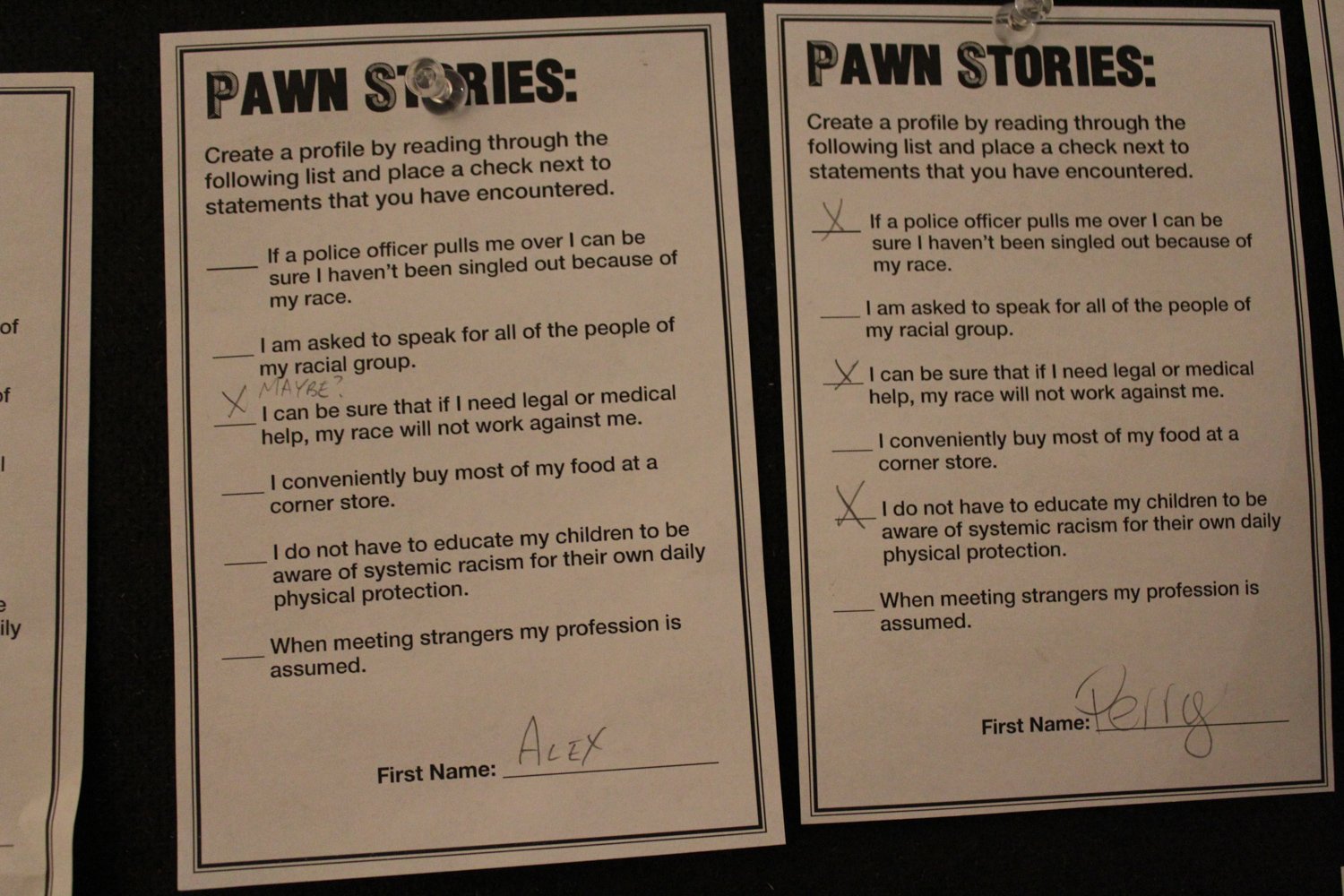Pawn Stories
2018
Collaborator: Jamond Bullock // alivepaintart.com // @alivepaint
JOURNAL ARTICLE by Jod Stokes-Casey : Art/Race/Violence: A Collaborative Response
Pawn Stories invites viewers into a “Pawn Shop” to actively participate in an alternative system of exchange. As one enters the shop, participants encounter common objects that are connected to cases of police force, racial profiling and incarceration to shed light on modern lynching practices and gain a better understanding of how close one could be or is to sharing these experiences.









A participants level of interaction is based on whether they have had a personal experience with being racially profiled or have connection to the criminal justice system. For example, an individual who has had a personal experience will be asked to write down their story in exchange for a humanizing link… a hug. Individuals that have not experienced racial profiling will be asked to create a personal profile that will be exchanged for an object that are connected to a case of police force, racial profiling and an unbalanced criminal justice system. Exchanged objects will shed light on how common racial profiling is for people of color and offer a glimpse as to how close they could be to sharing these experiences if they were born with a different skin color.
Exchanged stories and profiles will be hung on “community boards” inside the store to archive previous transactions. The interior of Pawn Stories contains a mixture of three dimensional display cases with stylized two dimensional black & white line drawings to create the functional and aesthetic elements of the shop. The muted and simplified aesthetic will visually emphasize the store’s retail items while playing off of the concept that the store is a coloring book that has yet to be colored.
Pawn Stories initiates a dialogue that builds momentum to create change. Where people who are numb or unaware gain perspective to the challenges of black privilege. Statistically, African Americans are incarcerated five times as frequently as white Americans and serve higher prison sentences for the same crime as white inmates. Our prison systems are in the business of dehumanization of communities of color similar to slavery. This installation is a part of the Re-humanization process of African American people.

